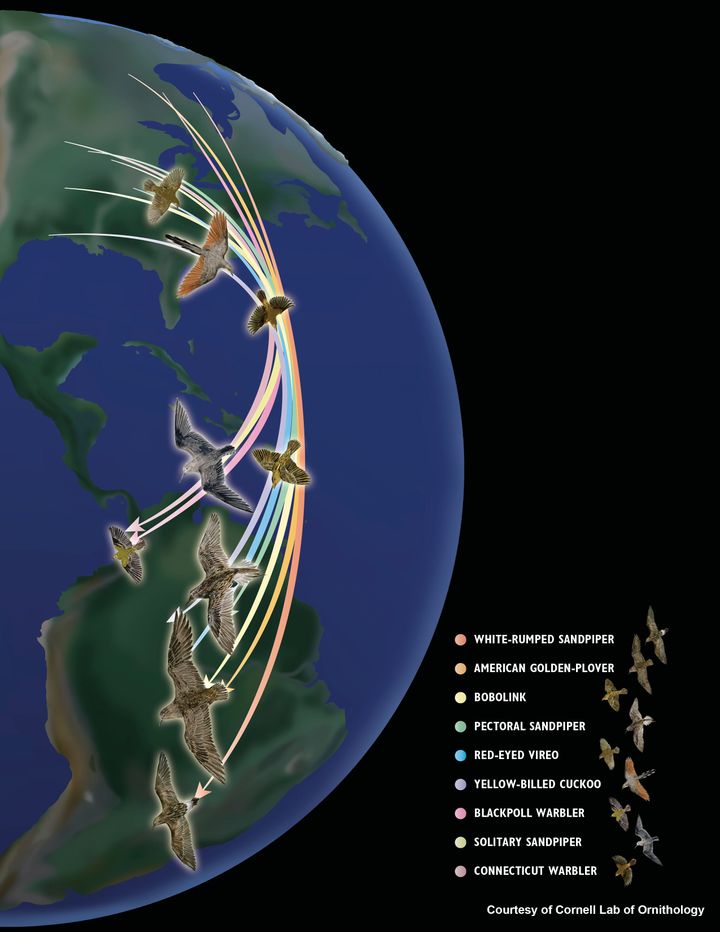
A new animated map that shows how birds migrate up and down the Western Hemisphere in a year will leave you spellbound.
Scientists at the Cornell Lab of Ornithology created the map as part of a study documenting the annual migratory movements of bird populations. Their research showed that many species travel surprisingly similar routes, according to Frank La Sorte, a research associate at the lab and lead author of the study.
"This is the first time the movements of migratory bird populations have been documented at a hemispheric extent, so many of our findings are completely novel," he said.
The researchers analyzed the migration patterns of 118 bird species using the millions of observational records and information that everyday bird-watchers reported in the online database eBird.
They then used those findings to create the map above. Each dot on the map represents one of the 118 species of birds the researchers studied.
Many of the species appear to travel in a clockwise loop throughout the year, heading south over the Atlantic Ocean during the Northern Hemisphere's fall to spend winter in the Caribbean and South America -- and then looping around to take a more inland route northward in the spring.
"The use of routes that cross the Gulf of Mexico is broadly accepted now," La Sorte said. "The use of routes that cross the Atlantic in the autumn, however, is still a topic of debate. Our findings provide compelling evidence that this pathway is used by more species than previously thought."
The bird species that follow this broad "loop" pattern include bobolinks, yellow and black-billed cuckoos, Connecticut and Cape May warblers, Bicknell’s thrush, and shorebirds such as the American golden plover, according to the researchers.

However, these migratory patterns could be disrupted if seasonal atmospheric and environmental conditions shift due to climate change, the researchers concluded. For instance, warmer atmospheric temperatures can cause unusual high-altitude wind patterns, which would in turn affect birds.
"Mild or supportive winds play a central role in successful oceanic crossing," La Sorte said. "If these winds were to change in direction or strength, the efficiency and viability of these strategies may be dramatically altered."
"This may impact bird populations in other oceanic flyways, and we are currently exploring the application of the methods used in this study in other geographic regions of the globe," he added.
The study was published in the Proceedings of the Royal Society B: Biological Sciences on Jan. 20.
Also on HuffPost:

